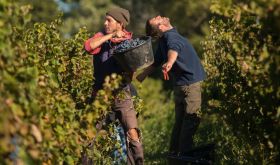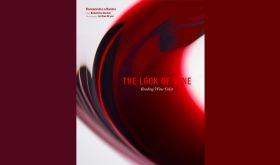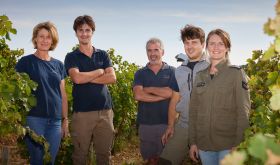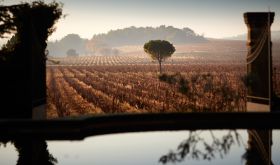Last week I wrote about how Nature delivered the potential to make a perfect red wine vintage in Bordeaux in 2005. But how were the white wines and what did winemakers make of these glorious ingredients?
2005 white bordeaux Amazingly enough the primeurs tastings of embryonic 2005s in Bordeaux earlier this month demonstrated that not only was this an exceptional vintage for red wines, it was very good indeed for sweet whites and very good for dry whites too. Sauvignon Blanc was notably concentrated by low yields in 2005 while the other white wine grape Semillon yielded particularly generously so that, most unusually, producers in the Sauternes sweet white wine region enjoyed both quality and quantity in 2005 because practically all the rot was of the useful, concentrating noble sort rather than the ignoble grey rot which usually forces sweet white wine producers to discard a significant proportion of their crop. The style of the 2005 sweet wines seems somewhere between the wonderful 2001 and the ultra-sweet 2003 but closer to 2001. Certainly Yquem 2005 is a real humdinger managing to express both richness and the purity that characterises all good 2005s of any colour in bordeaux.
How the wines were made If there had been practically no problems in the vineyard during the 2005 growing season, many winemakers encountered difficulties in the winery. With such high sugar levels, it was perhaps inevitable that some vats would threaten not to ferment fully with accompanying risks of residual sugar and volatile acidity. And with acidity levels notably low, especially in many of the riper Merlots, the brettanomyces spoilage yeast was another threat. On quite a number of wines I smelt a telltale trace of sweaty animal hide but many tasters rather like ‘brett’ at low levels. Then there were the very slow malolactic fermentations which, most unusually, foisted green apple acidity and gassy characters on tasters of some of the wines earlier this month.
But this was almost as unusual a vintage as 2003, with the difference that during this year’s primeurs tastings there was much talk of IPTs, the index of total phenolics (mainly tannins) which at many properties reached record levels. Ch Cos d’Estournel reported 80, its St-Estèphe neighbour Montrose 85. In St Emilion IPTs over 10 were rumoured. “Far too high even for press wine,” snorted Christian Moueix of Ch Pétrus, proud of the restrained levels of 65 to 75 in his stable of notably early-picked wines of. Frédéric Engerer of Ch Latour (IPT 65 to 67) was equally unwilling to enter into this competition to see who could make the toughest, darkest wine, although Paul Pontallier of Ch Margaux, another hugely successful left bank first growth, was obviously rather tickled that the IPT in his 2005 reached 78 (as opposed to 72.5 in 2003, 70 in 2000 and a mere 62 in 1982).
Wrong turns on the right bank Much depended of course on how much was extracted from these notably tiny, thick-skinned grapes. Most of those who managed to make appetising, super-pure wines opted for minimal intervention in the extraction process, confident that the naturally high alcohols would automatically encourage the phenolics out of the skins and into the wine. But some producers, notably in St-Emilion, seem to have deliberately decided to make a very different style of wine, by prolonged maceration on the skins long after the end of fermentation, resulting in exceptionally deep-coloured wines with painfully exaggerated dry tannins on the finish.
In some cases, particularly in St-Emilion, producers were advised to add acidity before fermentation because of the extremely low natural acid levels in the Merlots. This was often an unnecessary precaution because, as in 2003, overall acid levels rose during fermentation, but there are 2005s with very uncomfortably high levels of acidity – perhaps because of this or perhaps because extended macerations leeched some greenness from the pips as well as all the riper phenolics from the skins.
Whatever the reasons, my blind tastings of St-Emilions were the most frustrating because truly sensational
raw ingredients seemed too often to have been needlessly ruined. One theory is that there are so many producers of mid-priced St-Emilion that they feel the need to do something – anything – to make their wines stand out from the crowd. Whatever the reasons, 2005 was characterised by the vast difference in tannin quality between those that refreshed the palate and those that deadened it with a rasp of sandpaper. As Pierre Lurton of Ch Cheval Blanc, the most sumptuous, and completely unforced, St-Emilion of all put it, “you could build a chalet out of some of these wines”.
The yields paradox Because France in general and Bordeaux in particular has such a glut of basic wine, not least after the generous 2004 harvest, official maximum yields were trimmed to very modest levels just before the 2005 harvest. This was fine for the top properties which can afford to tend and thin every vine individually in order to ripen even the late-ripening Cabernet Sauvignon fully and opulently. But the layers of cash-strapped producers beneath this level, particularly those making Médoc and basic Bordeaux, cannot afford such luxury and too often were forced into harvesting sometimes underripe Cabernet which had to be ‘bled’ (the less concentrated juice run off) down to the permitted yield to such an extent that the resulting wine was too often completely unbalanced. And these were the producers most likely to lack the equipment needed to avoid stuck fermentations and brett. While the heat of 2003 helped to ripen Cabernet in even the less glamorous areas of the left bank, many producers really struggled in the dry but much cooler 2005 vintage.
Commune by commune The most consistently satisfying appellations are the Ps: Pauillac, Pessac-Léognan and Pomerol. But St-Julien is as usual very respectable indeed, Margaux and Listrac notably riper than usual with some stars, especially in Margaux, and St-Estèphe is home to the battle of the giants – massively tannic wines in the main. The vast appellation of St-Emilion is all over the place but with some lovely wines, while you can hardly go wrong with Sauternes. For the reasons outlined above, Haut-Médoc, Médoc and Moulis wines should be chosen with particular care.
The best red wines in brief Wonderful concentration, alcohol, tannin, purity of flavour. Should provide great drinking both young and old. I gave a record number of wines more than 18 points out of 20 (see below) and appreciated how unusually eloquently they expressed their origins.
Prices Most amusing, yes – talking of extraction. This year will surely, alas, be a record-beater. The international wine trade is raring to go. The plane back to London from Bordeaux after the primeurs tasting was 90 per cent wine merchant-loaded, and could have been propelled by sales intent rather than aviation fuel. There will be a very nasty scrap for allocations of the top wines to merchants, and the potentially even nastier business of allocating them to the most faithful, or perhaps most affluent, customers.
There will also be no shortage of retailers claiming that all 2005s are simply stunning and that all you need to do is buy into their cellar plan and let them do the work.
As I write, it is still too early to know enough about prices to give exact buying advice, but I have suggested some possible great buys – for drinkers rather than investors. Investors will just have to climb into that bullpit and wrestle for their first-tranche trickle.
The Bordelais are organising Le Weekend des Grands Amateurs, a chance for wine consumers to taste 2005s and other vintages in Bordeaux on May 6/7. More details from www.ugcb.net/commerce/wga/index.html or +33 05 56 51 91 91.
Greatest wines Cheval Blanc, Haut-Brion, Lafite Rothschild, Latour, Margaux, La Mission Haut-Brion, Vieux Château Certan, Yquem
Almost as great
Reds: Ausone, Les Carruades de Ch Lafite, Clinet, Cos d’Estournel, Ducru Beaucaillou, L’Eglise Clinet, L’Evangile, Lafleur, La Fleur Pétrus, Langoa Barton, Léoville Las Cases, Montrose, Mouton Rothschild, Petrus, Le Pin, Tertre Roteboeuf, La Tour Haut-Brion, Trotanoy, Valandraud
Whites: Climens, Coutet, Doisy Daëne, Haut-Brion, Laville Haut-Brion, Raymond Lafon, Rayne Vigneau, Rieussec, Suduiraut, La Tour Blanche.
Possible bargains
Bahans Haut Brion, Bourgneuf Vayron, Branaire Ducru, Chapelle de La Mission, Clos Badon Thunevin, La Dominique, Duhart Milon, Feytit Clinet, Grand Puy Ducasse, Issan, Lynch Moussas, Prieuré Lichine, Roc de Cambes, Talbot
See purple pages for detailed tasting notes on more than 600 2005 bordeaux.













